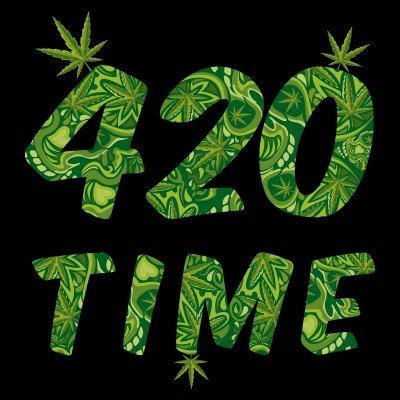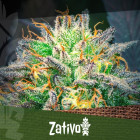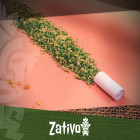Don't have an account?
Register NowYou have to add to cart at least 5 bottles or any program to make checkout.
- BlogThe meaning of 420
The meaning of 420
Published: January 25th, 2016
Categories:
Cannabis Info
There isn’t a cannabis enthusiast in the world who hasn’t heard of the famous phrase 420, yet despite its popularity, very few actually know what it means and where it came from.
Ask anyone on the street what 420 is, and likely they will tell you it is synonymous with cannabis. It has become code the world over for friends looking to share a bit of bud, a time to celebrate by getting high, and even as a way of describing something awesome within wider cannabis culture. Many a time we have heard someone say “that is so 420!”. Without a doubt, it is a positive word that holds a lot of meaning to people across the globe.
420 has roots in underground cannabis culture - that much is clear. From there, it became the a tagline for everyone involved, and grown with the prominence of cannabis culture - until pretty much everyone in modern society know what it means. However, the exact origins are murky – we know that the phrase emerged from the growing cannabis scene, but why, and who was responsible? First, let’s dispel some of the myths.
POPULAR 420 MYTHS
- 420 is American police code for marijuana use in progress – This is not, and has never been true. Police code 420 refers to homicide, and in the penal code, it means an obstruction to public land.
- Cannabis contains 420 cannabinoids – As of writing this, only 111 cannabinoids (the main active compounds) have been discovered and isolated within cannabis. Including non-cannabinoid compounds, there are only 315.
- Bob Marley (or any celebrity associated with weed) died on April 20th – As fitting a tribute as it would be, Bob Marley died on May 11th, 1981.
- Californian Senate Bill 420 is the bill that legalized medical marijuana – This is technically true, but it happened in 2003, decades after the phrase 420 came into popular use.
- The Grateful Dead came up with it – The grateful dead and their deadhead fans certainly help spread the term throughout the US, but they didn’t come up with it, and they didn’t stay in room 420 whenever staying at a hotel.
- All Dutch smokers light up at 4:20 – while some probably do, it is not a Dutch tradition, and certainly not the origin.
- The 20th of April is International Marijuana Appreciation Day – Yes, but because of 420, not the other way around.
So if all of these – and the many other wild stories out there - are all myths, what is the true origin of 420? Well, there are a couple of schools of thought on this. One says that a group of school friends known as The Waldos – who later had links to The Grateful Dead – would meet at 4:20 to smoke and go hunting for a local legendary cannabis patch out in the wilds. Whilst this is largely thought by many to be true, there are now those who question it, and follow another school of thought, saying it was the Bebes, a rival gang of friends, who first coined the phrase. So let’s take a look at each.
The Waldos
The story into uncovering the truth begins in 1997, when Steve Hager, chief editor of the High Times Magazine, and founder of the Cannabis Cup, pondered the question himself. One day, Hager was contacted by a couple of guys who called themselves “The Waldos,” who claimed they knew the truth behind the origin.
Intrigued, Hager bought a plane ticket to San Rafael in California, where The Waldos were based. He interviewed them, and anyone who would talk to him about the potential origins of 420. After some lengthy research Hager managed to piece together a picture of what had happened, and it goes something like this:
Back in 1971, The Waldos were a group of 5 high school kids who would regularly meet up to get blazed. One day, the group caught wind of some gossip that said a member of the local coast guard had been growing a patch of cannabis out in the wilds near his station. However, he had since moved on with work, forcing him to abandon it. With their boyish charm and hopes, the group made plans to try and find the patch for themselves, and make it their own.
In order to make a co-ordinated effort, the Waldos agreed to meet up after school, at 4:20 pm, by the statue of Louis Pasteur, a famous 19th-century scientist. From here the group would set out into the wilds, testing their luck in the hunt for the fabled cannabis patch. Despite never finding anything, the boys were not dissuaded and continued to meet at 4:20 to go off into the wilderness, have a ramble, and smoke. It became an excuse for them all to hang out and get high more than anything.
420 became their code for meeting up after school, often saying “420 by the statue,” or “420 Louis” to each other in passing. From here it developed within the group to have a wider meaning, being a general question to mean “do you have any,” or even “do I look stoned?” allowing them to talk to each other about weed without their teachers being any the wiser.
HOW DID IT SPREAD?
This is all well and good, but how did the code slang of a small group of teenagers develop into a worldwide phenomenon? Well, as touched upon earlier, it ties to links with The Grateful Dead. Around this time that The Grateful Dead moved to San Rafael, and it just so happened that the father of Mark Gravitch, a member of the Waldos, managed property for the band. In addition to this, the brother of Dave Reddix, another Waldo, managed one of the Dead’s side bands. This gave The Waldo the perfect in with the band, and would often go to their rehearsals, performances, and parties.
Dave described how the Grateful Dead “had this rehearsal hall on Front Street, San Rafael, California, and they used to practice there. So we used to go hang out and listen to them play music and get high while they're practicing for gigs. But I think it's possible my brother Patrick might have spread it through Phil Lesh. And me, too, because I was hanging out with Lesh and his band [as a roadie] when they were doing a summer tour my brother was managing."
This led the phrase, which was used as a general reference to marijuana, to spread to the band and their entourage. From here, 420 traveled with the band, spreading everywhere they went. It became a commonplace phrase, especially backstage whilst touring.
It is a great story, but leaves some questions open and unanswered. For example, why 4:20? It is said that they were all part of after school sports clubs, and 4:20 is when they all finished, but it seems like quite the coincidence. It is a story that has not convinced everyone, including Hager, who still went on to tell it.
THE BEBES
This is where The Bebes come in. The Waldo’s story had a ring of truth about it, but still didn’t quite add up for Hager, so he did some more digging. It wasn’t until 2012, when Hager received an email from Brad Brann, a man calling himself “Bebe” that the next chapter of the story unfolded, going on to split opinion on the true origin of 420.
Bebe was a leader of a gang, known as “The Bebes”. They just so happened to also live in San Rafael, and even attended the same high school as The Waldos. According to Bebe, he even dubbed The Waldos with their name, first calling them “gomers” in passing, before it evolved into “Waldo”. A gomer was slang for someone who was socially awkward, based on the character Gomer Pyle from the cult classic movie Full Metal Jacket.
Bebe also named each individual member of his gang, with the roster being as follows: Wild Du, Puff, Thorgy, Hello Andy, Bone Boy, The Worm, the Blue Boys (Blue and The Mead), and Turkey.
According to Bebe, one Saturday early in a semester, Bebe was hanging out with Wild Du and Puff at their house. They were passing around a bong, and when it got to Bebe, he looked at the clock and said” it’s 4:20, time for bong loads” before taking a massive hit.
From there, 420 became their slang, often saying “four-twone.” The phrase four-twone caught on at school and was used by kids to talk about marijuana without anyone else catching on. This is, apparently according to Bebe, how the Waldos stole it before passing it onto The Grateful Dead.
It is a much less interesting story, and is certainly not as charming. But maybe its simplicity is the very reason it could be true. Very few things in life actually come from extravagant or outrageous circumstances and are often created in the most mundane way. It could also be a case of childish boyhood rivalry from a man who never really moved on. Who knows? This is far as the story goes, so you will have to decide. What is for sure, irrespective of which group of teenagers came up with it, it was passed onto The Grateful Dead by The Waldos, making it a phrase that lives on as a legend. 420 shall forevermore be an integral part of cannabis culture, and a symbol of freedom, hope, and the right to get high!





